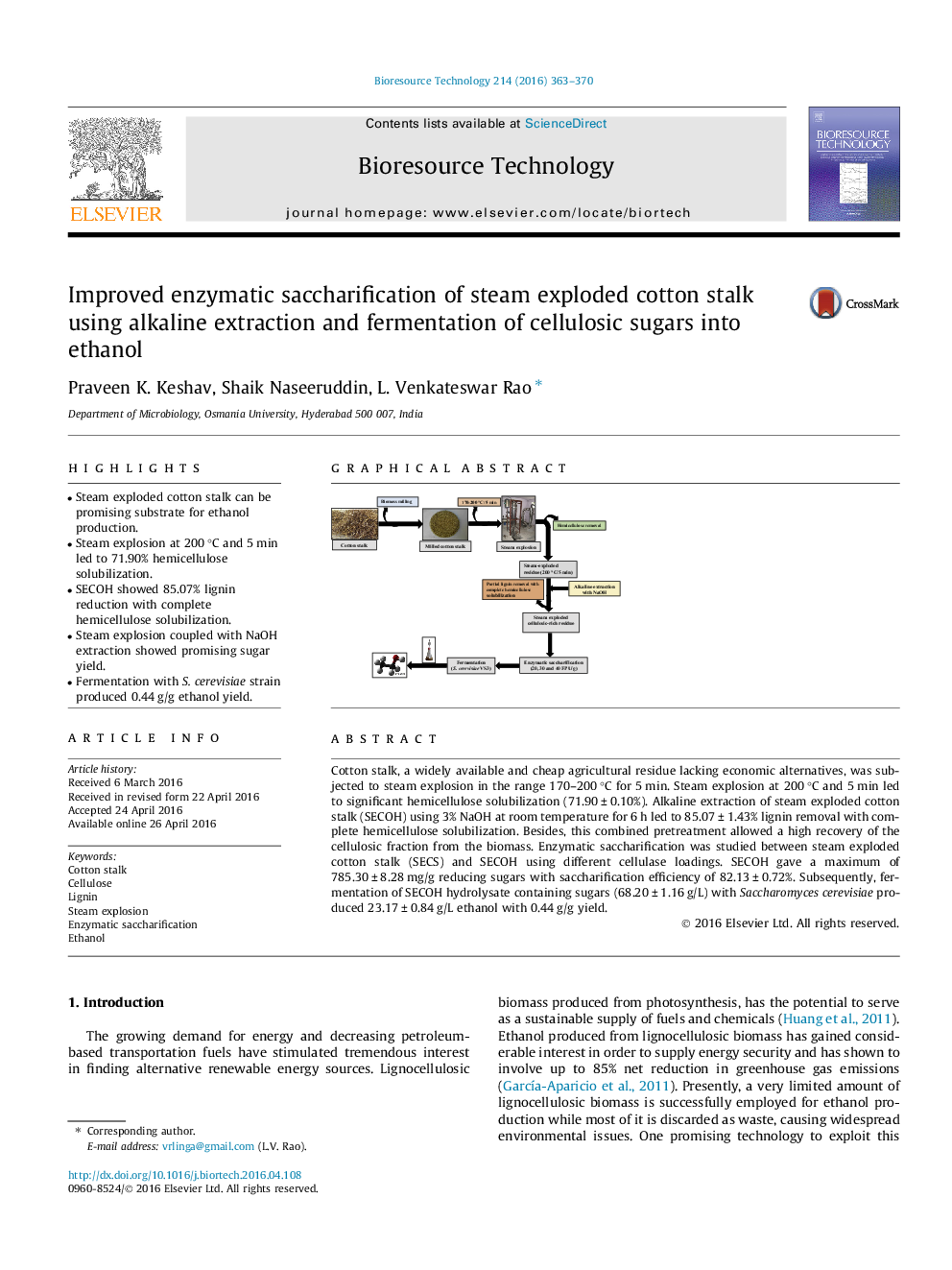| کد مقاله | کد نشریه | سال انتشار | مقاله انگلیسی | نسخه تمام متن |
|---|---|---|---|---|
| 679075 | 1459929 | 2016 | 8 صفحه PDF | دانلود رایگان |
• Steam exploded cotton stalk can be promising substrate for ethanol production.
• Steam explosion at 200 °C and 5 min led to 71.90% hemicellulose solubilization.
• SECOH showed 85.07% lignin reduction with complete hemicellulose solubilization.
• Steam explosion coupled with NaOH extraction showed promising sugar yield.
• Fermentation with S. cerevisiae strain produced 0.44 g/g ethanol yield.
Cotton stalk, a widely available and cheap agricultural residue lacking economic alternatives, was subjected to steam explosion in the range 170–200 °C for 5 min. Steam explosion at 200 °C and 5 min led to significant hemicellulose solubilization (71.90 ± 0.10%). Alkaline extraction of steam exploded cotton stalk (SECOH) using 3% NaOH at room temperature for 6 h led to 85.07 ± 1.43% lignin removal with complete hemicellulose solubilization. Besides, this combined pretreatment allowed a high recovery of the cellulosic fraction from the biomass. Enzymatic saccharification was studied between steam exploded cotton stalk (SECS) and SECOH using different cellulase loadings. SECOH gave a maximum of 785.30 ± 8.28 mg/g reducing sugars with saccharification efficiency of 82.13 ± 0.72%. Subsequently, fermentation of SECOH hydrolysate containing sugars (68.20 ± 1.16 g/L) with Saccharomyces cerevisiae produced 23.17 ± 0.84 g/L ethanol with 0.44 g/g yield.
Figure optionsDownload as PowerPoint slide
Journal: Bioresource Technology - Volume 214, August 2016, Pages 363–370
